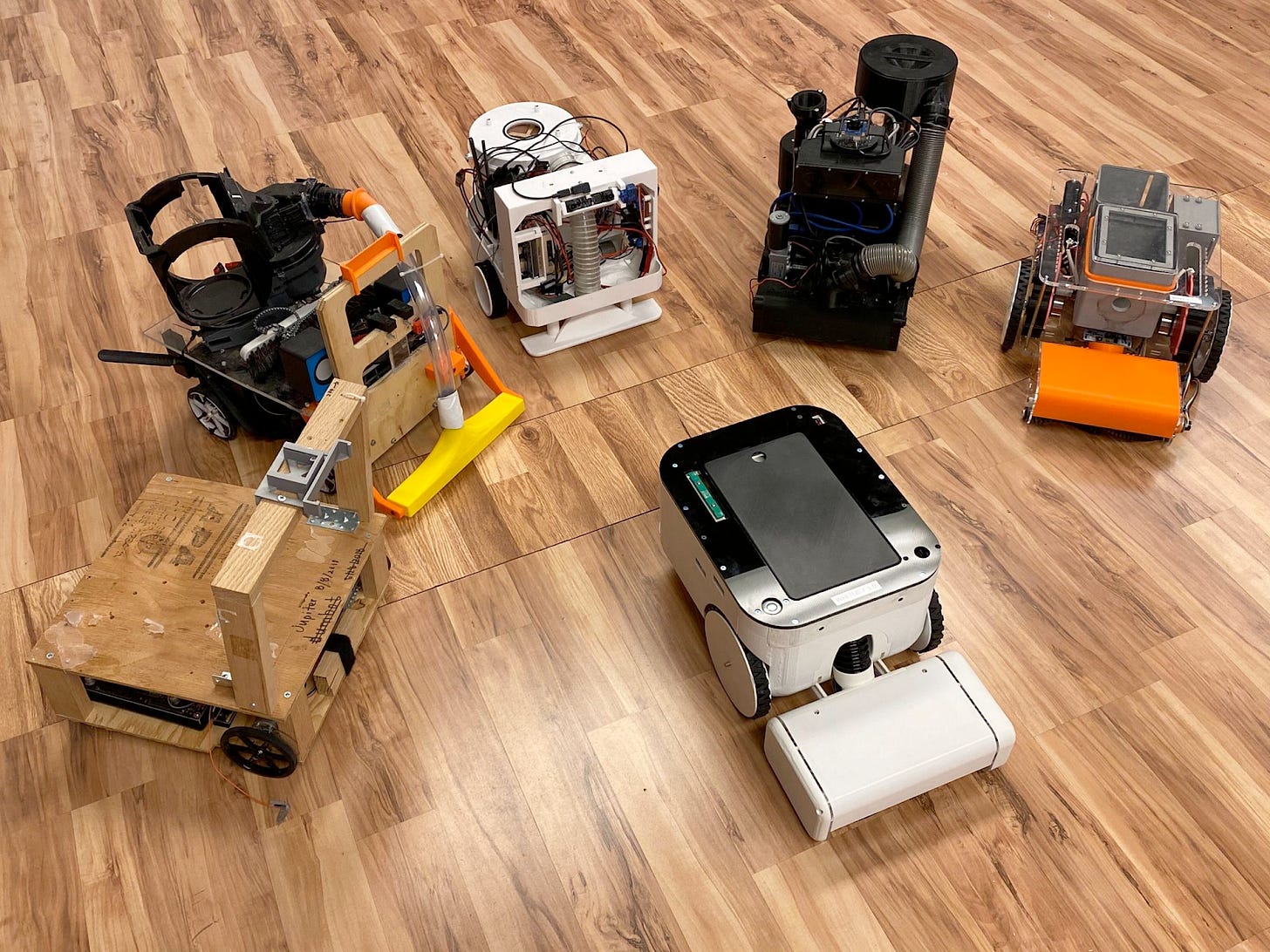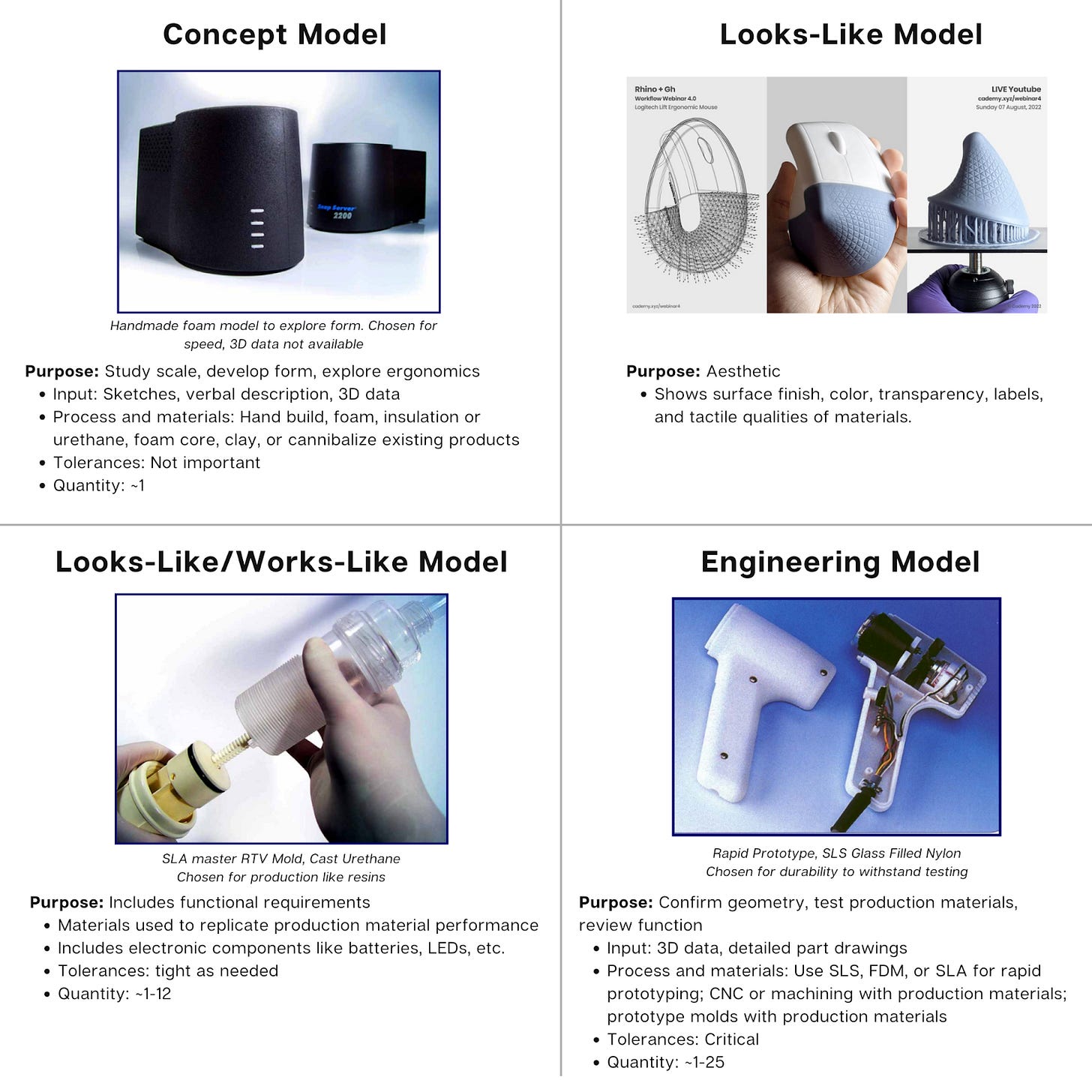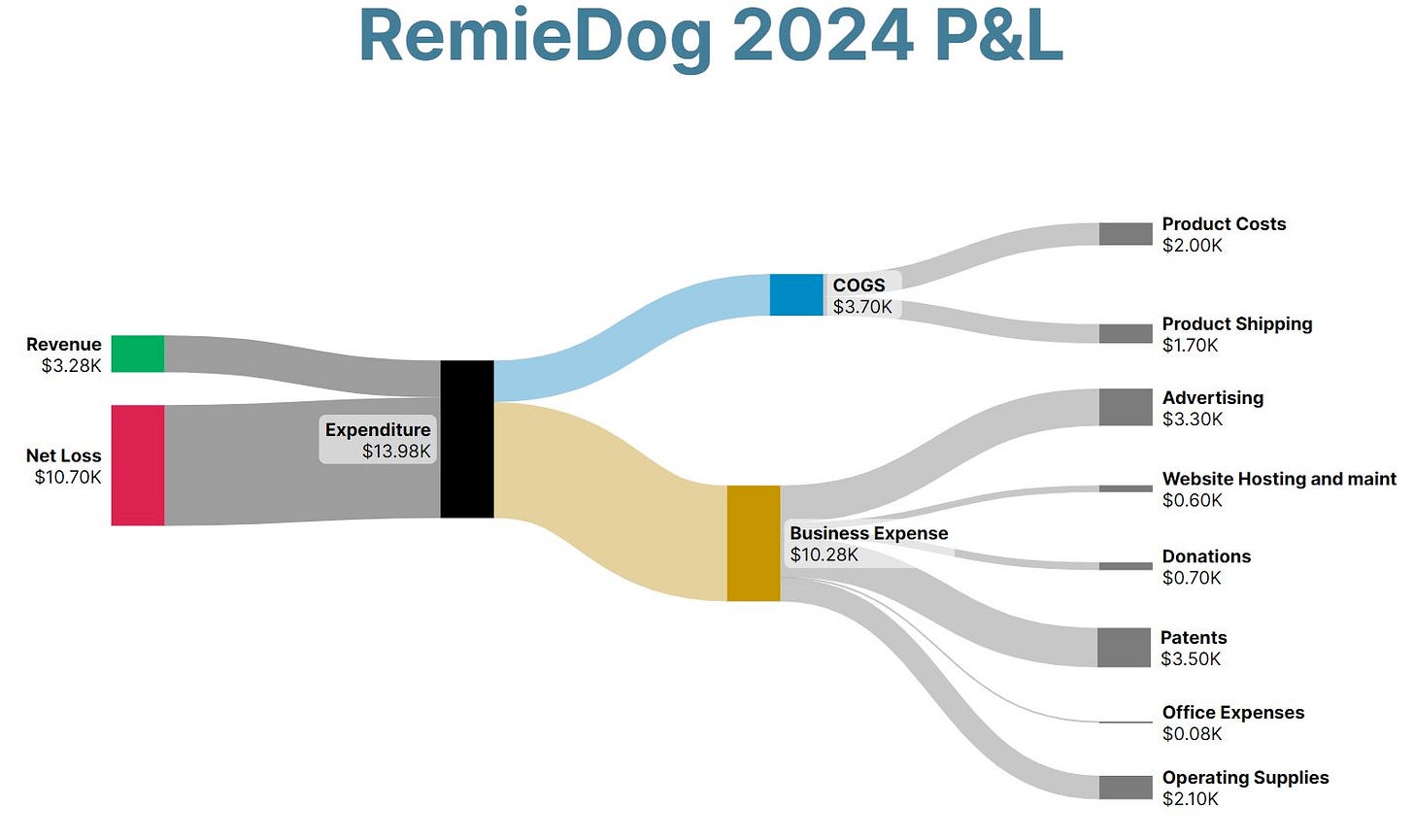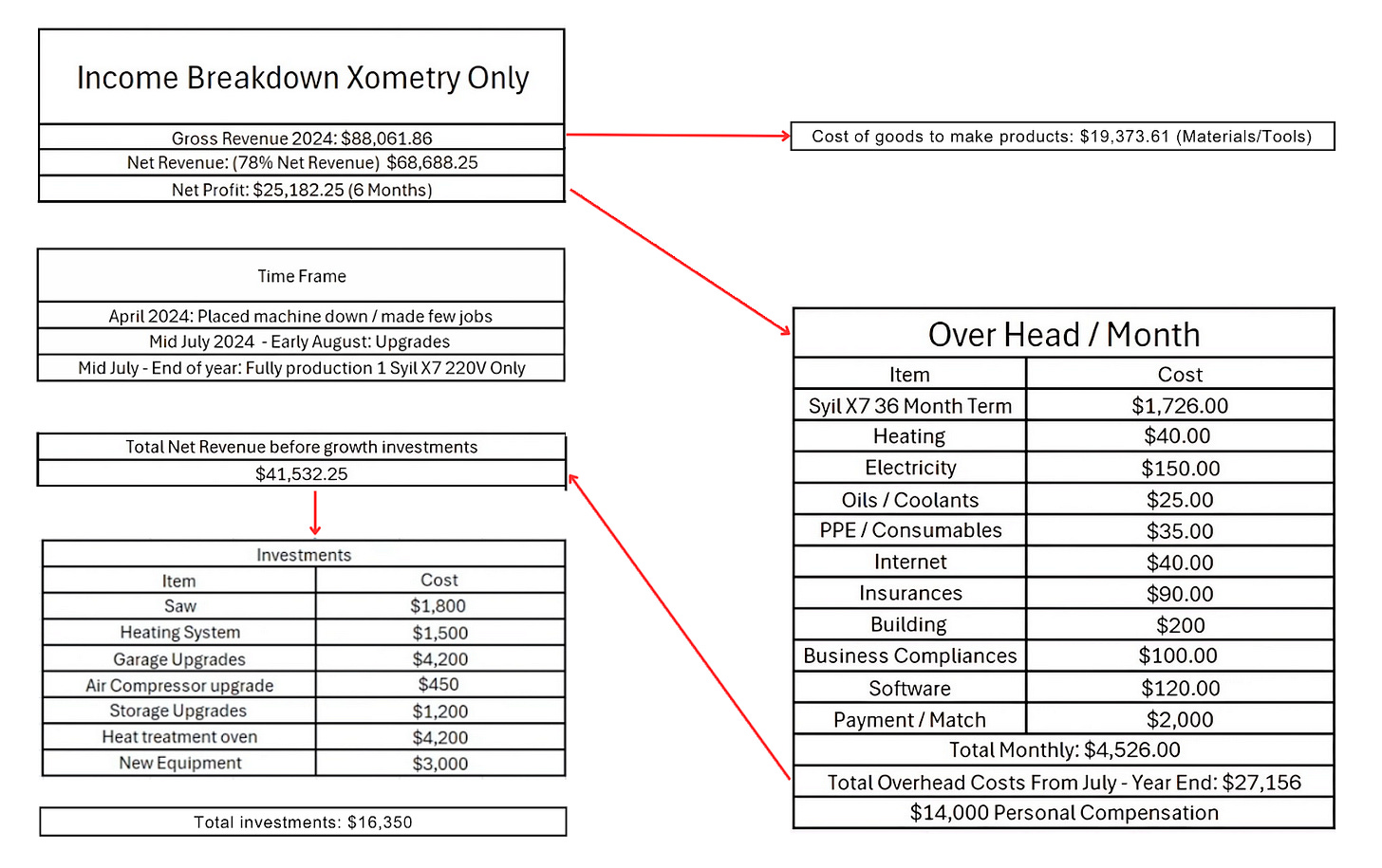👋 Happy Saturday! This weekend’s highlights include lecture notes on product development, an interesting profit and loss breakdown of a smart poop bag dispenser product, and how a CNC shop operating out of a garage made $88K in 6 months.
Interesting Lecture Notes: Prototyping Methods in Product Development 📝
Some of your favorite products began as cardboard cut-outs, foam carvings, pieces of plywood, or 80/20 aluminum extrusions. Prototyping is the backbone of hardware development—it's how ideas take shape, fail fast, and iterate toward what you actually want to build!
This MIT course covers common prototyping methods and the models used in hardware development to validate designs and requirements. You'll learn how early-stage "looks-like" and "works-like" prototypes evolve into refined engineering models, bridging the gap between concept and production.

Interesting Chart: Profit and Loss of a Smart Poop Bag Dispenser 📊
A Sankey diagram showing the fiscal year profit and loss of RemieDog, a company that makes dog poop bag dispensers with automatic low-bag alerts.
Interesting Video: How a Garage CNC Shop Made $88K in 6 Months
Ever wonder what happens when you place an order through an online manufacturing platform like Fictiv or Xometry? Meet Evan—a CNC machinist running a shop out of his garage with a small CNC mill, specifically a Syil X7, that he financed on 36-month terms. A high-level breakdown of his current operations:
$88,000 revenue in 6 months.
$25,000 net profit.
$1,700/month machine payment
If you’re just starting out, you’ll be placed in the standard supplier group. Complete 15 jobs with good delivery and quality ratings, and you can request access to their premium platform to access higher-paying jobs and opportunities.
Manufacturing & Startup News
Leftovers from our weekly research into hardware startups and manufacturing news—these didn’t make the weekday issue but were too good not to share!
San Miguel Electric Cooperative in South Texas will convert its coal-fired power plant into a solar and battery facility, backed by over $1 billion in federal funding, reducing the number of coal plants in Texas to 14.
Factorial has unveiled its 40Ah Solstice™ all-solid-state battery cells, utilizing a novel dry coating process to enhance energy density and sustainability.
The U.S. Air Force has reopened competition for its Next-Generation Ejection Seat program, focusing initially on the F-16, while continuing with Collins Aerospace for the F-15.
Russia has completed its 4th Project 22220 nuclear-powered icebreaker.
The Ministry of Defence in Ukraine has developed a tactical quadcopter nicknamed the “Shmavic” after widespread name recognition of civilian DJI Mavic’s in the conflict. The military analogue will be purpose-built and feature more advanced anti-jamming systems.
GE Hitachi's BWRX-300 small modular reactor has passed a significant regulatory milestone in the UK, advancing to Step 2 of the Generic Design Assessment.
Focused Energy and Amplitude have entered into a $40 million agreement to develop high-energy lasers for advancing inertial fusion energy technology.
Qcells has achieved a world record efficiency of 28.6% for a commercially scalable perovskite-silicon tandem solar cell, verified by Fraunhofer ISE CalLab.
Synspective, a Japanese SAR satellite data provider, has gone public on the Tokyo Stock Exchange, planning for a 30-satellite constellation to enhance its data collection capabilities.
Fleet Space Technologies, an Australian company focused on satellite-enabled mineral exploration, has secured $100 million in its Series D funding round, led by the venture arm of the Ontario Teachers Pension Plan.
Thanks for reading to the end - if you’ve enjoyed the mechanics of these insights, consider sharing this issue with a fellow enthusiast!








Houde Hill prototyping paper. Apple. 1997